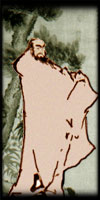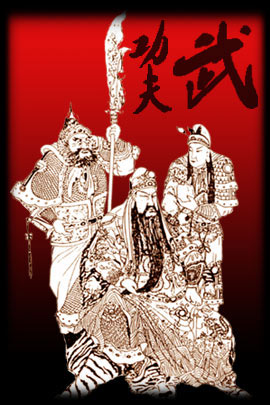Father of Kung Fu

It is widely believed that Ta Mo (Bodhidharma) 448-527 AD was the father of Buddhism as well as Shaolin Kung Fu in China. Ta Mo traveled from Southern India to spread the Buddhist faith to China. It is said he walked hundreds of miles to reach Northern China. Not only surviving the very dangerous journey with the threat of bandits but also managed to cross over the freezing Himalayan Mountains.
In the 17th century of China, the southern regions were highly crowded and overpopulated. The larger cities and villages crammed people together tightly. Most of the Gung Fu styles of southern China focused on close quarter fighting techniques with the hands, and low powerful footwork.
Most of the weapons where short and dull, and many farm tools were used as weapons. The close-in fighting that the southern styles are famous for represents the surroundings of the masters who developed them. Today we look at the techniques of southern styles and marvel at their effectiveness, but the 17th century practitioners were simply using their terrain and surroundings effectively.
The geography of southern China had a great impact on the southern styles. In northern China the cities were considerably fewer and less populated than in the south. There was more room and longer techniques were developed more effectively, including the use of longer and larger weapons, such as halberds and spears.
 In the portrait is General Kwan Yu seated, on his right, holding his seal is his godson Kwan Ping and on his left, holding his
sword, is his bodyguard and follower Chow Chong
In the portrait is General Kwan Yu seated, on his right, holding his seal is his godson Kwan Ping and on his left, holding his
sword, is his bodyguard and follower Chow Chong
The population and geography of southern China played an important role in the development of the five major southern styles. There are five major family styles of southern China: Hung Gar (founded by Hung Hei Gung), Lau Gar (founded by Lau Sam Ngan), Choy Gar (founded by Choy Gau Yee), Lei Gar (founded by Lei Gum Lun) and Mok Gar (founded by Mok Ching Giu). All southern styles have rapid close quarter strikes with the hands and usually low powerful kicking techniques aimed below the belt. The focus is learning through suffering. Building up a strong foundation in the Say Ping Ma (Horse stance). Many southern styles exist and they all seem to share these major guidelines.
You will never see a southern style which does not work on stances and powerful hand techniques. Most of the southern styles are family styles which represent close communication and traditional values. Most southern styles were passed down through
different families and developed only within the family and close friends that were taught. Since the government of that time wanted martial virtue repressed, the family styles had to be careful where and when they trained, for fear of losing life or worse, family. Many great southern masters are credited with evading the government and keepingGung Fu alive. The torment and anguish that the southern masters endured shall forever be remembered by everyone who learned from them, directly or down through the generations.
General Kwan Yu - God of Martial Arts
No Gung Fu Kwoon (school) is complete without a Sun Toi (alter) to Kwan Yu. His life is portrayed in the historical novel "Three Kingdoms". General Kwan Yu is the patron saint of Kung Fu practitioners. He is known as a great protector of the people and a mighty fighter. His loyalty and honor as well as martial skills set the standards for Mo Duk (Martial Virtue).

